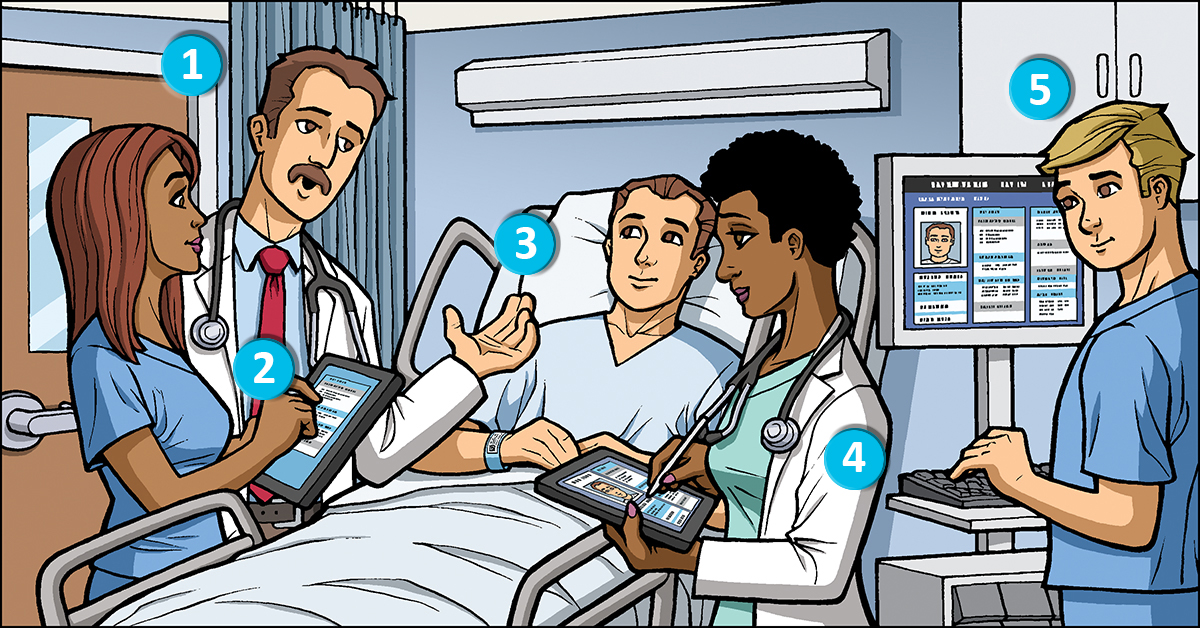1. PROBLEM: Lack of Attention
SOLUTION:
Patient hand-offs should be carried out in a quiet, distraction-free zone where incoming and outgoing providers can focus on the effective and accurate transfer of patient information and strategies. Everyone involved should be attentive and engaged to ensure that all information is correct, nothing is missed, and the patient has an opportunity to ask questions if needed.
2. PROBLEM: Unprofessionalism
SOLUTION:
Providers conducting a patient hand-off should make every effort to ensure that they appear and act in a professional and responsible manner. Their personal appearance should be neat and tidy; no one should be eating, drinking, or chewing gum; they should give their full attention to the information exchange.
3. PROBLEM: Privacy Breaches
SOLUTION:
To prevent or resolve any privacy issues, providers should choose a quiet and private hand-off location where no patient information can be overheard. Ideally, providers should aim for a “warm hand-off” at the patient’s bedside so that the patient has an opportunity to contribute to the conversation and ask any questions that they may have for the providers about past care or next steps.
4. PROBLEM: Quality-of-Care Issues
SOLUTION:
Instead of handing over potentially indecipherable handwritten notes to the incoming providers, outgoing providers should ensure that all necessary and relevant information is recorded in the patient’s medical record before they end their shifts. Incoming providers should take notes electronically during the hand-off, if possible, to ensure that they and any co-managing providers are fully aware of any concerning medical issues, the plan of care, and potential problems to watch for during the upcoming shift.
5. PROBLEM: Lack of Documentation
SOLUTION:
Providers should clearly and accurately document information provided during the hand-off in the EHR. This ensures that it will be available for their own later reference and for the reference of co-managing providers. In addition to recording details related to the patient’s clinical status, providers should document any questions the patient may have had and the answers provided to those questions. A complete record of the hand-off, entered in the medical record at the time of the hand-off, can help keep the patient healthy and safe and ensure that incoming providers have a complete picture of the patient’s history and any potential clinical concerns.

